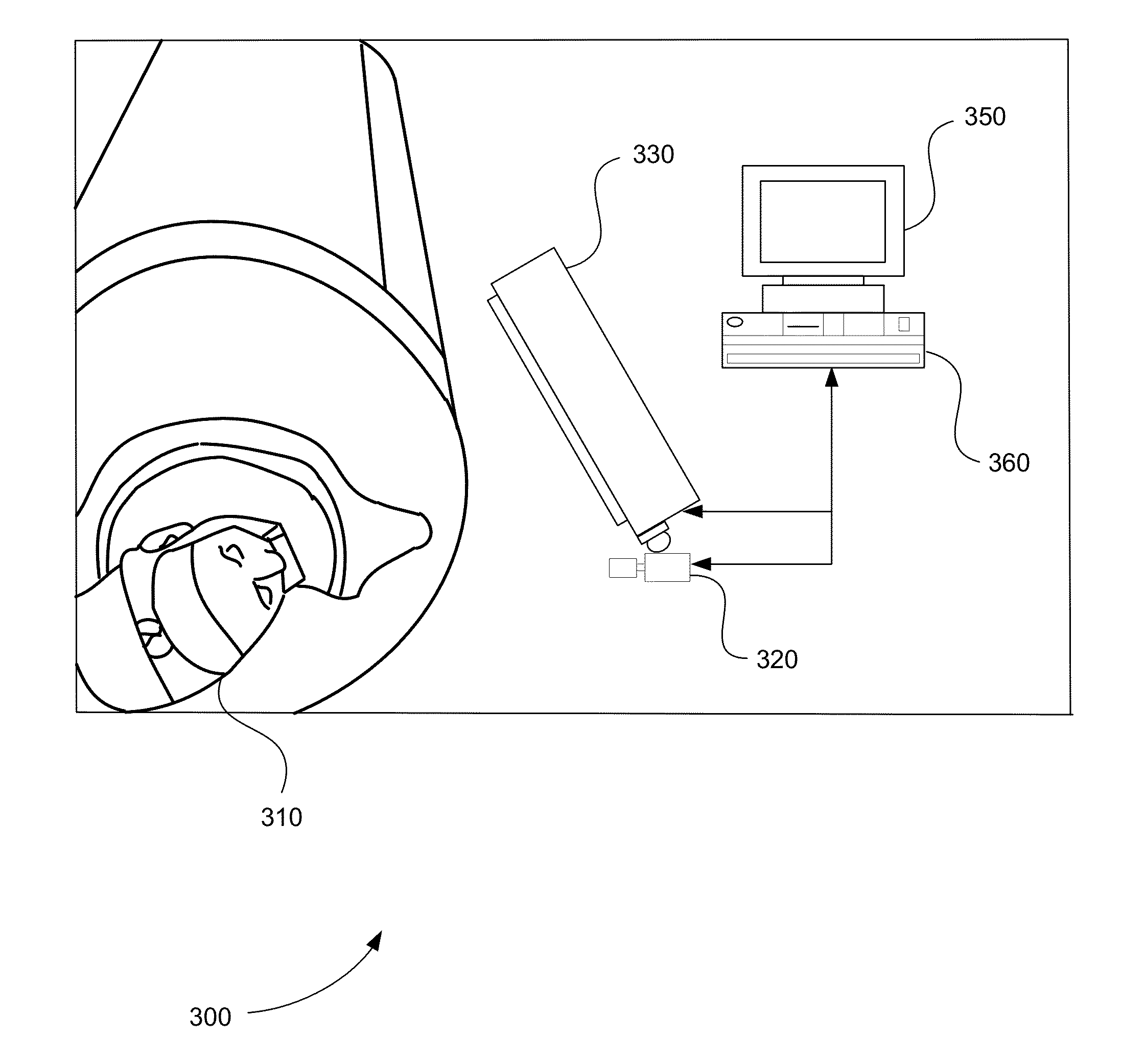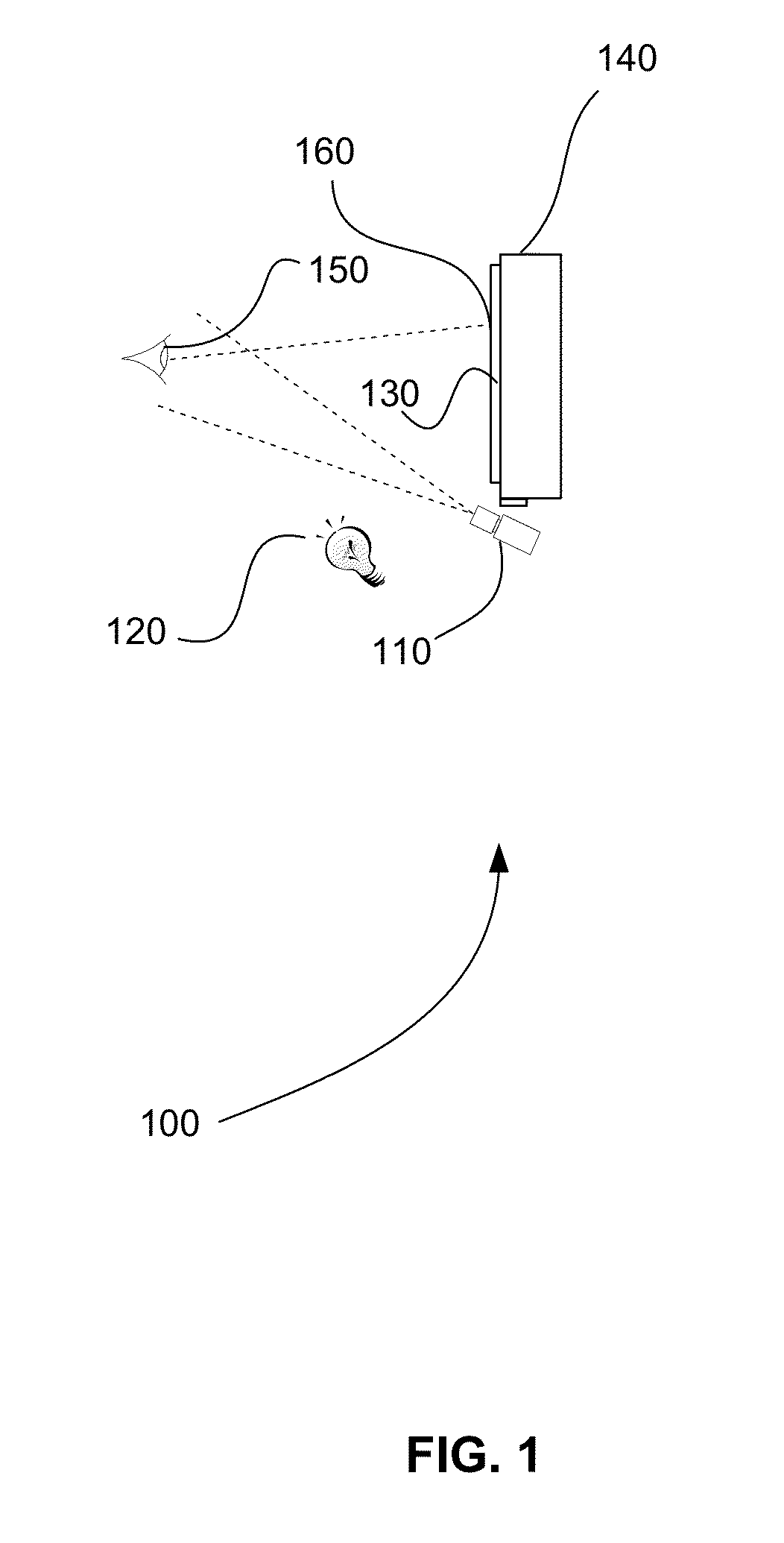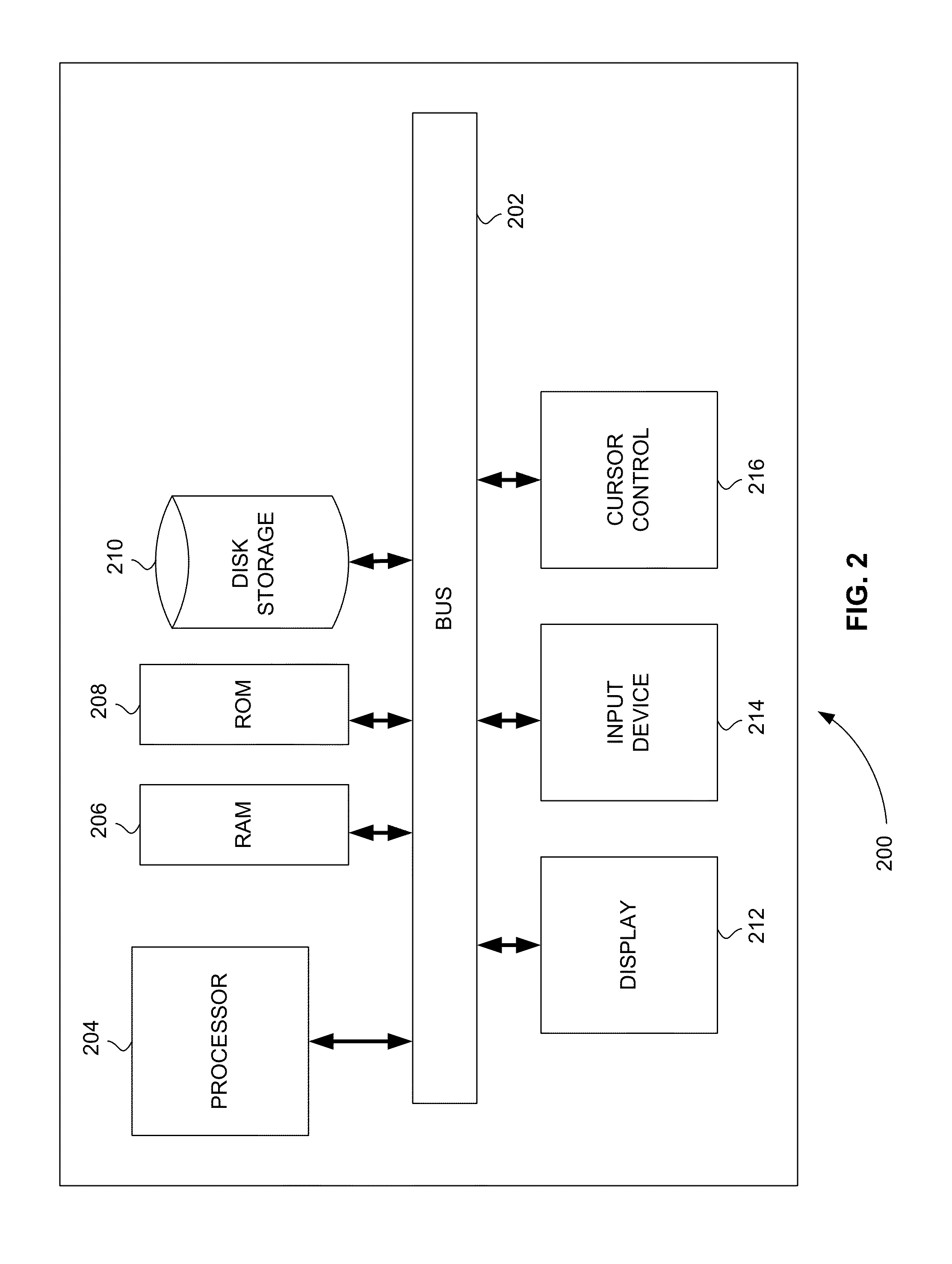Gaze based communications for locked-in hospital patients
a technology for hospital patients and communications, applied in the field of gaze based communications for locked-in hospital patients, can solve the problems of sudden inability to communicate physical needs, and inability to communicate with patients with significant hospital population
- Summary
- Abstract
- Description
- Claims
- Application Information
AI Technical Summary
Benefits of technology
Problems solved by technology
Method used
Image
Examples
Embodiment Construction
Computer-Implemented System
[0023]FIG. 2 is a block diagram that illustrates a computer system 200, in accordance with various embodiments. Computer system 200 includes a bus 202 or other communication mechanism for communicating information, and a processor 204 coupled with bus 202 for processing information. Computer system 200 also includes a memory 206, which can be a random access memory (RAM) or other dynamic storage device, coupled to bus 202 for determining base calls, and instructions to be executed by processor 204. Memory 206 also may be used for storing temporary variables or other intermediate information during execution of instructions to be executed by processor 204. Computer system 200 further includes a read only memory (ROM) 208 or other static storage device coupled to bus 202 for storing static information and instructions for processor 204. A storage device 210, such as a magnetic disk or optical disk, is provided and coupled to bus 202 for storing information a...
PUM
 Login to View More
Login to View More Abstract
Description
Claims
Application Information
 Login to View More
Login to View More - R&D
- Intellectual Property
- Life Sciences
- Materials
- Tech Scout
- Unparalleled Data Quality
- Higher Quality Content
- 60% Fewer Hallucinations
Browse by: Latest US Patents, China's latest patents, Technical Efficacy Thesaurus, Application Domain, Technology Topic, Popular Technical Reports.
© 2025 PatSnap. All rights reserved.Legal|Privacy policy|Modern Slavery Act Transparency Statement|Sitemap|About US| Contact US: help@patsnap.com



